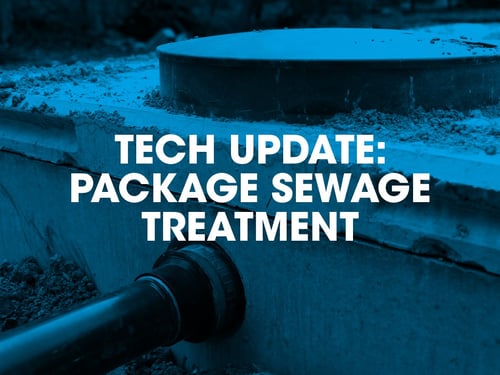Why is the tank covered under warranty?
Drainage for which the policy holder is responsible for, is covered under our New Homes, Social Housing, Self-Build and Private Rental Scheme (PRS) policies. Drainage cover may also be in place on some of the other policies we offer, where the specifics of the level of insurance cover, must be established.
Definitions
Package sewerage treatment plant
A package sewerage treatment plant operates as a full system to treat waste effluent from a dwelling, the plant includes pumps to enable the waste to pass through media, the media contains voids which is full of bacteria, the bacteria breaks down the waste and enables a clean discharge from the plant. The treatment plant will still require periodic emptying from time to time to clear non degradable waste products.
Septic Tank
A septic tank was the original method of dealing with effluent in remote areas where there was no provision for mains drainage. The tank effectively separates solids from liquid; the liquid is released from the tank via irrigation drainage. The liquid is not clean! The solid waste will collect at the bottom of the tank and will require emptying periodically.
Cesspool
Cesspools are similar to septic tanks apart from they do not have the discharge pipe and are therefore emptied more regularly and are usually larger in size. Cesspools are commonly used in areas where there are risks associated with irrigation contamination.
What are the most important factors to consider for treatment plants, septic tanks and cesspools from a risk management perspective?
Capacity
- It is important that tanks are adequately sized, tanks are normally classified by the population they would serve, so effectively if you have a five person three bed house, a 5-6 person tank would suffice, the smaller treatment plants generally start from around a 5-7 person size and can increase substantially to plants in excess of 300 population.
Storm Drainage and ground water
No storm drainage ground water drainage must pass through the tank as this reduces the effectiveness of the sewerage treatment.
Installation
- Most plants are made of GRP or plastic and the walls are relatively thin. This is because the plants should be backfilled with concrete. The concrete backfill provides the strength and the GRP or plastic provides the waterproof lining. The manufacturer’s installation guide must be followed.
- It is important that when the concrete is poured that the tank is filled with water at the same rate as the pour; this is to ensure that equal pressure is maintained internally and externally to prevent the tank from crushing, again the manufacturer’s installation guide must be followed.
Discharge
- Most treatment plants will have a discharge pipe which in the case of treatment plants should be clean water which could discharge into a water course, this would require environment agency approval, septic tanks usually have irrigation drainage, the effectiveness of the irrigation drains rely on the porosity of the ground. As the water is not completely clean, there are some restrictions particularly in river and brook catchment areas as to where septic tanks may be used.
- There is no discharge from a cesspool.
Emptying and servicing
- Under the Building Regulations there is a requirement that tanks are accessible for emptying.
Discharge
- The ground conditions and water table movements must be suitable to allow the installation. Percolation tests will be required and the Warranty Surveyor given the opportunity to appraise.
- Consent should be obtained by the Environment Agency (England and Wales) to allow discharge to or near a watercourse or river.
Recommendations
From a warranty perspective, where a tank or treatment plant is to be installed, our Risk Management Surveyor will discuss our Technical Requirements and agree an inspection regime for the drainage system.

